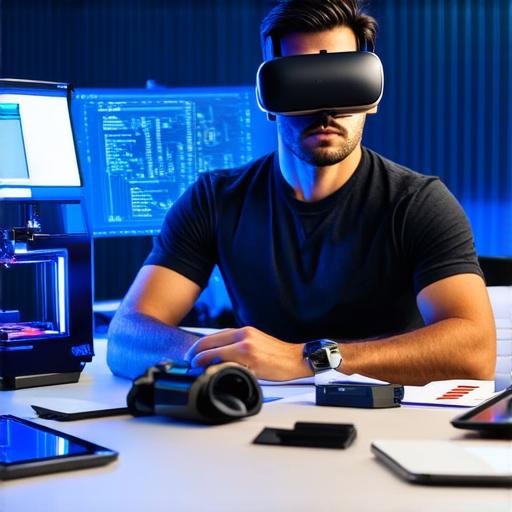Introduction:

Augmented reality (AR) is an exciting technology that allows users to interact with virtual objects in the real world. AR has a wide range of applications, including gaming, education, healthcare, and retail.
What is Augmented Reality?
Before we dive into the technical aspects of developing AR software, let’s first understand what AR is. AR is a technology that overlays digital information onto the real world. It allows users to see virtual objects in their environment and interact with them as if they were real. AR can be experienced through a smartphone or a specialized device such as an AR headset.
AR Development Basics:
Now that we have a basic understanding of AR, let’s discuss the basics of AR development. There are several key components to developing AR software:
-
Marker detection: In order for the AR application to recognize virtual objects, it needs to be able to detect markers in the real world. Markers are special codes or patterns that allow the application to identify an object and overlay digital information onto it. There are several marker detection techniques, including image recognition, depth sensing, and optical character recognition.
-
3D modeling: Once the marker is detected, the next step is to create a 3D model of the virtual object that will be displayed in the AR environment. 3D modeling involves creating a digital representation of an object using specialized software such as Blender or Maya.
-
Texturing and lighting: After the 3D model is created, it needs to be textured and lit to give it a realistic appearance. Texturing involves adding visual elements such as texture maps and colors to the 3D model. Lighting involves simulating the light sources in the environment to create shadows and highlights on the virtual object.
-
Integration with AR platform: The final step is to integrate the AR application with an AR platform, such as Unity or Unreal Engine. This allows the AR application to run on a device and be viewed through the camera.
Advanced Techniques and Tools:
Now that we have covered the basics of AR development, let’s discuss some advanced techniques and tools that can help enhance the AR experience:
-
Machine learning: Machine learning is a technique that allows the AR application to learn from user behavior and adapt to new environments. For example, if the user moves the device around the marker, the machine learning algorithm can adjust the position of the virtual object to keep it in view.
-
Computer vision: Computer vision is a technique that allows the AR application to recognize objects in the environment based on visual cues. This can be useful for applications that require the recognition of specific objects, such as identifying products in a retail store.
-
Motion tracking: Motion tracking is a technique that allows the AR application to track the movement of the device and adjust the virtual object accordingly. This can create a more immersive experience by allowing the user to interact with the virtual object in real-time.
-
Cloud-based rendering: Cloud-based rendering is a technique that allows the AR application to render high-quality graphics on a remote server, reducing the load on the device and improving performance.
Real-Life Examples:
Let’s take a look at some real-life examples of AR applications to see how these techniques are being used in practice:
-
Pokémon Go: Pokémon Go is an AR game that allows users to catch virtual creatures in the real world. The game uses marker detection, 3D modeling, and computer vision to create a fun and engaging experience for players.
-
IKEA Place: IKEA Place is an AR app that allows users to see how furniture would look in their home before buying it. The app uses machine learning and computer vision to recognize the user’s environment and adjust the position of the virtual objects accordingly.
-
Snapchat Lenses: Snapchat Lenses are a popular feature of the social media platform that allows users to add AR filters to their photos and videos. The lenses use image recognition and motion tracking to create fun and engaging effects for users.
Conclusion:
Developing software for augmented reality can be a challenging but rewarding process. By understanding the basics of AR development and using advanced techniques and tools, developers can create immersive and engaging experiences for users. As AR technology continues to evolve, we can expect to see even more innovative applications in the future.
FAQs:
Q: What is marker detection in AR development?
A: Marker detection is a technique used in AR development to recognize digital objects in the real world. It allows the AR application to identify an object and overlay digital information onto it.
Q: What is 3D modeling in AR development?
A: 3D modeling is a process used in AR development to create a digital representation of an object. This involves creating a 3D model using specialized software such as Blender or Maya.
Q: What is machine learning in AR development?
A: Machine learning is a technique used in AR development to allow the application to learn from user behavior and adapt to new environments. It can be used to improve the accuracy of marker detection and adjust the position of virtual objects in real-time.
